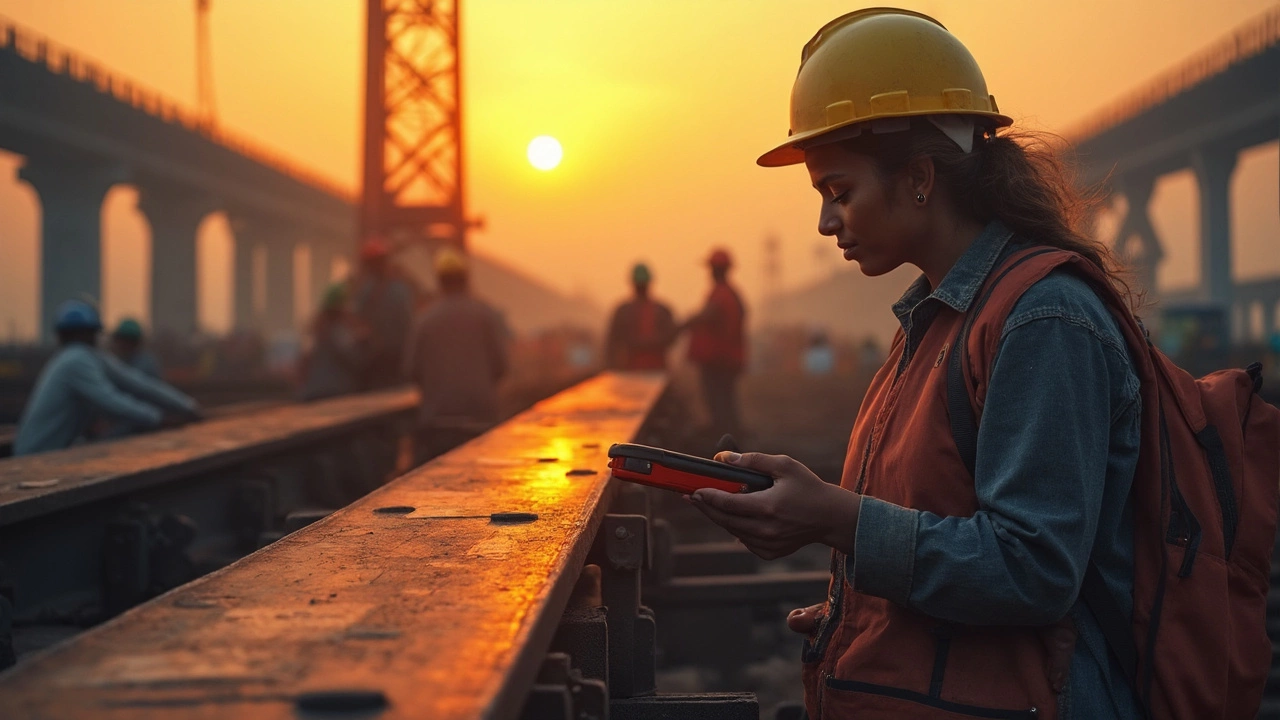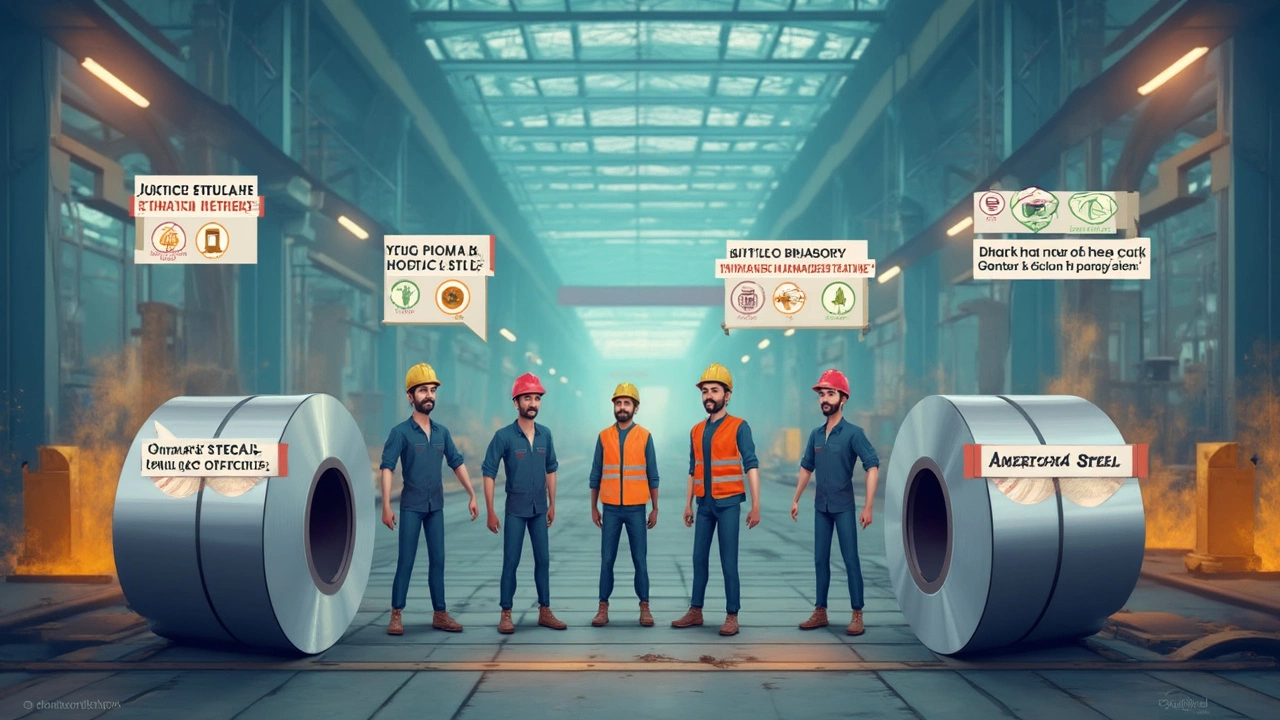
If you’ve ever shopped for steel pipes, sheet metal, or even a backyard grill, you’ve probably noticed people talking up American steel—like it’s in a league of its own compared to Chinese steel. Ever wonder if that’s actually true or just marketing? The answer’s more complicated than bumper stickers would have you believe.
The “strength” of steel isn’t just about where it comes from. It depends on the formula, the mill, the machinery, even the skill of the workers. American mills have a reputation for stricter quality controls, but that doesn’t automatically mean every American-made beam could lift a truck, or that Chinese steel will bend like a noodle.
What you’re really buying into is a whole process—chemical makeup, how the steel’s melted, poured, rolled, and how often they’re testing batches. You can have tough-as-nails steel coming out of any country if the standards are tight and the people know what they’re doing. On the flip side, cutting corners can happen anywhere.
- Why People Think American Steel Is Stronger
- What Really Makes Steel Strong
- Quality Standards: USA vs. China
- How to Spot Good Steel (Wherever It’s Made)
- Does Origin Matter or Is It All About Quality Control?
Why People Think American Steel Is Stronger
The belief that American steel is stronger than Chinese steel pops up everywhere, from shop floors to online forums. But where does this idea come from? A lot of it’s got to do with history and reputation. For decades, the U.S. built its economy around steel—think skyscrapers, cars, and big bridges. Famous projects like the Golden Gate Bridge used American-made steel, and many people still connect that strength and reliability with anything stamped “Made in USA.”
Another big reason is the difference in government rules. The United States has tighter regulations when it comes to testing, quality control, and reporting mistakes. American mills follow certifications from organizations like the American Society for Testing and Materials (ASTM) and the American Iron and Steel Institute (AISI). These groups lay out super-specific standards, making sure every batch of steel meets a certain toughness, chemical makeup, and even rust resistance.
Meanwhile, Chinese steel manufacturing really exploded in the 2000s, but stories spread about bridges and buildings using subpar materials. While not all Chinese steel is weak, a few high-profile fails gave people the impression that it’s less reliable. It didn’t help when the U.S. Commerce Department added some Chinese plants to a “blacklist” for dumping substandard steel at super-low prices.
- American steel usually gets checked more often during production.
- There are lots of “Buy American” rules for government contracts, so U.S. mills are under a microscope.
- Imported steel sometimes lacks full documentation, making it tougher to trace back if there’s ever a problem.
Here’s something concrete: according to a 2023 industry survey, over 70% of U.S.-based builders and buyers said they “trust American steel first” when structural integrity is critical. That’s a lot of faith riding on a reputation, not just cold hard numbers.
What Really Makes Steel Strong
When it comes to steel strength, it’s not just about having iron and calling it a day. The recipe is everything. You’ve got four main building blocks that set one steel apart from another: what’s in the mix, how it’s made, how it’s treated, and how it’s tested.
- Ingredients: Steel isn’t just iron—it’s a mix. Carbon is the real game-changer here. The more carbon, the harder the steel, up to a point. Add elements like manganese, nickel, or chromium, and you change the way steel resists rust or handles stress. American and Chinese plants use different blends based on what the steel’s supposed to do.
- Process: You’re not pouring Grandma's soup here. Everything—from the kind of furnace to the rolling temperature—makes a difference. Hot-rolled and cold-rolled steel feel different and behave differently because of how they’re processed. Some places reheat, some regulate cooling speed, and others don’t bother. That’s why the results can swing from super tough to just plain average.
- Heat Treatment: Ever hear of quenching or tempering? These are just ways to reboot steel after it’s shaped, so it doesn’t snap under pressure. Done right, the steel gets tougher and more flexible. Skip it or mess it up, and you’re looking at weaker stuff.
- Testing: Nobody wants faulty beams in a bridge. Reliable plants test samples from every batch—stretching, bending, even snapping bits of steel to make sure they meet specs. This is where countries start to look very different, depending on how strict their rules are and how much they stick to them.
Keep in mind, actual numbers can show the gap. For example, the yield strength (how much stress steel can take before it deforms) for structural American steel is commonly rated around 50,000 psi, while Chinese steel in the same category sometimes falls between 36,000 and 46,000 psi due to differences in ingredients or quality controls. Here’s a quick breakdown:
| Type | Typical Yield Strength (psi) |
|---|---|
| American Structural Steel | 50,000 |
| Chinese Structural Steel | 36,000-46,000 |
Bottom line? Whether it’s American steel or Chinese steel, what’s in it and how it’s made count way more than the country on the shipping label. Good steel is always about tight controls and careful checks, not flags or logos.

Quality Standards: USA vs. China
So, does the place where steel gets made matter? Let’s break down what really goes on behind the scenes in both countries. Fact is, American steel makers are tied to tough rules—think of the ASTM, ANSI, or AISI standards that every batch has to pass. You’ve got inspectors pulling samples, running them through machines, checking for flaws, and keeping tight records. It’s all about traceability. If a batch is off, they can usually track down exactly where things went sideways.
In the United States, quality rules are pretty much carved in stone, and skipping checks isn’t an option. For anything that’s load-bearing—think bridges, skyscrapers, trucks—the steel must meet certain strength and composition numbers, or it gets ditched. Plants usually run tests for:
- Yield strength (how much force before it bends)
- Tensile strength (how much force before it snaps)
- Chemical makeup (the mix of iron, carbon, and alloy bits)
Now how about Chinese steel? China’s the biggest steel producer on the planet—almost half the world’s steel comes from there. Their mills can crank out quality stuff, especially from big names targeting exports. China does have standards like GB (Guobiao), but not all plants are equal. Some high-end operations match American quality, while others might skip steps to cut costs, especially for stuff sold at rock-bottom prices.
To give you a quick side-by-side, here’s what most buyers worry about:
| Country | Common Standards | Testing/Inspection | Common Use Cases |
|---|---|---|---|
| USA | ASTM, AISI, ANSI | Required, regular, with outside audits | Public infrastructure, automotive, aerospace |
| China | GB (Guobiao), sometimes ASTM for export | Range varies—top plants do rigid checks, cheaper plants not so much | Global exports, construction, machinery |
If you’re buying steel for something that needs to last or handle serious stress, always check for stamped certifications—no matter where it’s made. Certified steel manufacturing plants are your safe bet. Remember, strict standards make the difference, not just the country logo on the side.
How to Spot Good Steel (Wherever It’s Made)
You don’t have to be a metallurgist to figure out if you’re getting American steel, Chinese steel, or just plain solid steel. If you’re sourcing steel for a project, what matters most is quality, not nationality. But how do you actually check? Here’s what separates the good stuff from the junk.
- Check the paperwork: Reliable steel—no matter where it’s made—should come with a Mill Test Report (MTR) or Certified Material Test Report (CMTR). This document tells you how the steel was made, its chemical composition, the performance results, and more. Never skip this. If a supplier can’t give you one, that’s a red flag.
- Know your standards: The gold standards for steel quality are ASTM (American Society for Testing and Materials) and ISO (International Organization for Standardization). If your steel meets ASTM A36 or A992, for example, you know it’s been tested for strength and durability. Not sure what the code means? A quick search on the ASTM or ISO website will spell it out in plain English.
- Look for certifications and stamps: Good steel manufacturing plants stamp or tag their product with specification numbers and heat numbers. This is your guarantee the steel has passed its required tests. If there’s no mark, it’s anyone’s guess what you’re really getting.
- Appearance matters (to a point): Good steel has a consistent finish and no obvious cracks, warping, or weird coloring. Surface rust isn’t always a dealbreaker—as long as it’s just on the outside and hasn’t pitted deep into the metal.
- Ask about traceability: If a supplier can trace their batch back to a specific lot, you’re in better hands. This tracking actually saved a friend of mine’s company when they had to prove their structure was built from certified steel quality after an inspection.
It’s tempting to think you can spot “cheap Chinese steel” or “premium American steel” by sheer sight, but quality is in the paperwork and the process. A 2022 study from the American Institute of Steel Construction found more than 85% of failed steel products lacked complete certification documents, no matter which country they came from.
| Steel Test | What It Shows | Pass/Fail Indicator |
|---|---|---|
| Tensile Strength | How much pull it can handle before snapping | Listed on MTR |
| Yield Strength | When it starts to permanently bend | Listed on MTR |
| Chemistry Analysis | If it has the right mix of iron, carbon, and other stuff | Listed on MTR |
Bottom line? Strong, reliable steel comes down to how it’s made and tested—not just where it’s from. Stick to suppliers who play by the rules, and always ask for that paperwork.

Does Origin Matter or Is It All About Quality Control?
Here's the big question: does it really matter if your steel is stamped “Made in USA” or “Made in China”? You might be surprised, but the place it comes from isn’t always the make-or-break factor. What really counts is how closely the steel manufacturing plant sticks to proper quality control from start to finish.
Each country has its own rules and inspection systems, but many American steel plants tend to stick to tighter standards than some overseas facilities. But—and this is important—not every steel mill in China is the same, and not every American plant is perfect, either. What you want is steel that consistently passes tough tests, no matter where it’s poured.
To give an idea, the American Iron and Steel Institute keeps a super close eye on everything from raw ingredients to the final product. In fact, a 2024 industry update found that most American-made construction steel meets the ASTM A36 strength rating, which is a gold standard for buildings. Chinese mills can also hit this mark, especially when they’re working for big global contracts, but not every plant aims for the same bar.
"Steel quality is about process, not passport. If the plant follows repeatable, strict checks on chemistry, temperature, and forming, you can get excellent steel out of most modern mills anywhere," says Dr. Linda Chao, a materials engineer in the Midwest.
So what does quality control actually look like? It's not just paperwork and factory tours. Plants run tests at every stage. Those include:
- Check the chemical mix for just the right blend of carbon and alloy metals.
- Use x-ray or ultrasound to find tiny cracks or air bubbles.
- Perform bend and strength tests on random samples from every batch.
- Tag and track each piece so bad batches never sneak past the finish line.
Here's a quick comparison of some basics between American steel and Chinese steel production standards:
| Aspect | USA | China |
|---|---|---|
| Common Building Code | ASTM | GB (Guobiao) |
| Standard Inspections | Frequent, 3rd party audits | Varies (big-city mills are tougher) |
| Traceability | High (batch and lot records required) | Inconsistent (varies by mill/exporter) |
Want better odds you’re getting strong, reliable steel? Look for certification marks like "ASTM" or "ISO" on paperwork. Ask for the mill's test reports. If you’re buying for a serious building or infrastructure job, don’t assume all steel is built the same just because it comes from a certain country. What matters most is the company’s routine and how much they actually care about quality.